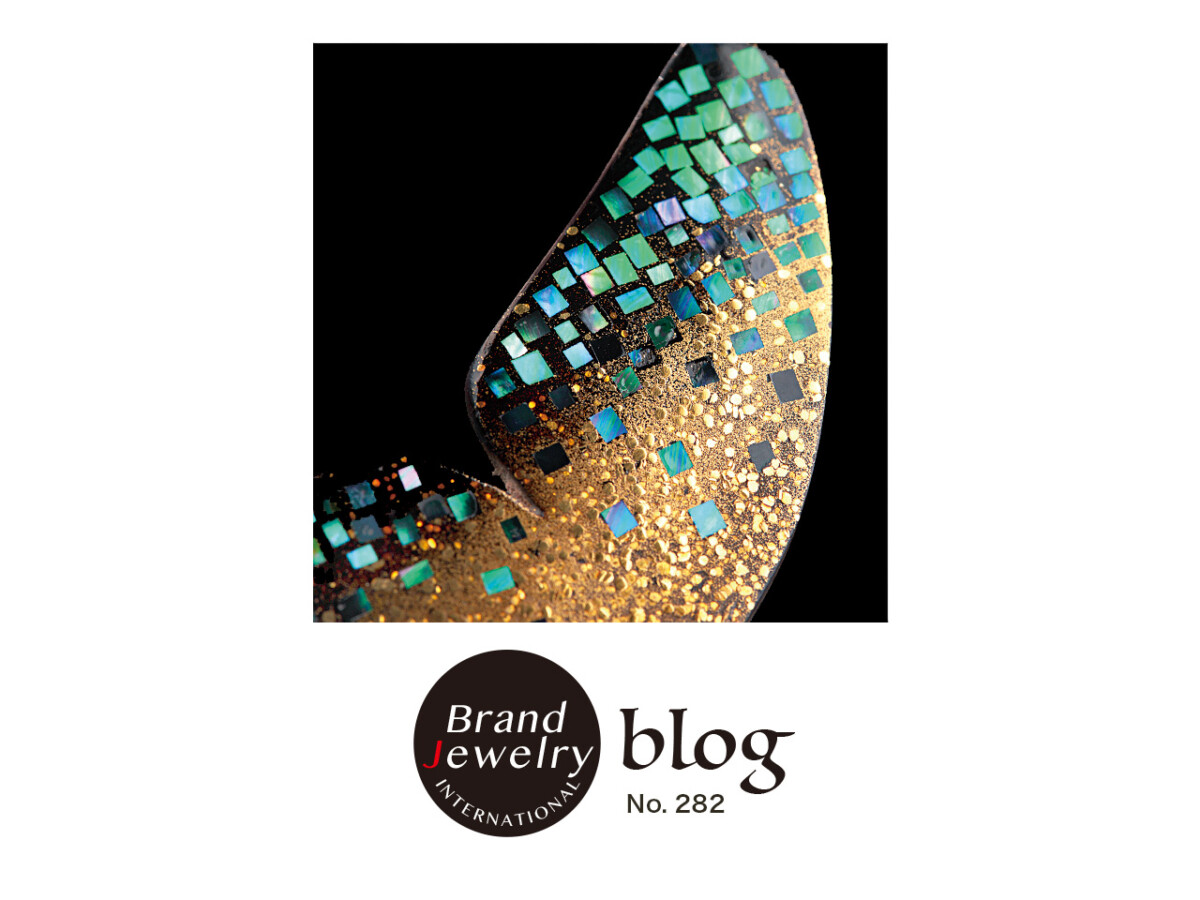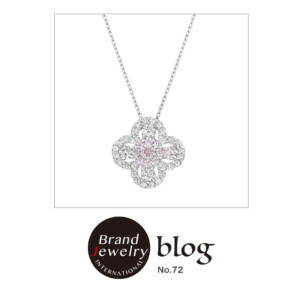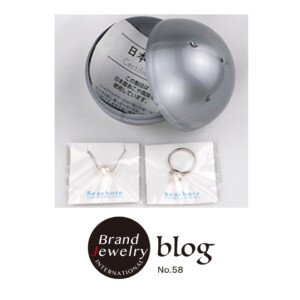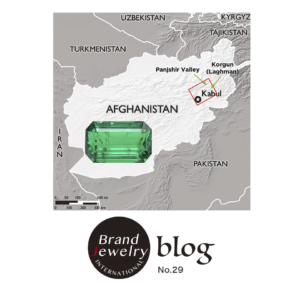
NO.282 日本で発展した螺鈿(らでん)と蒔絵の融合。細工に注目!
Text=Brand Jewelry
English follows Japanese
宝石以上に神秘的な色合い、輝きを放つ螺鈿蒔絵。日本の伝統工芸の欧米とは異なるしっとりとした優しさ、美しさに着目しました。
仏像、小物、ジュエリーに装飾される螺鈿蒔絵
今、東京国立博物館の、建立900年特別展示「中尊寺金色堂」が話題になっています。国宝の仏像11体がずらりと並び、さらに黄金に輝く金色堂とその内部をCGで再現。
仏像はガラスケースに入っていますが、堂内を体感できるCGの没入型の展示により、金色堂内陣に飾られている螺鈿(らでん)細工、宝石、象牙なども鮮明に見ることができます。特に真木柱(まきばしら)と呼ばれる4本の柱に施されている螺鈿細工は、圧倒的な迫力を持っています。
ところで、螺鈿にあまりなじみのない方もいらっしゃるかもしれませんね。螺鈿とは、アワビ・夜光貝・蝶貝など巻き貝の貝殻の内側にある真珠層を板状にしたものを、彫刻が施された漆地や木地の表面に嵌め込んだり貼り付ける技法です。オパールのような虹色の神秘的な輝きと、細やかに切り出された美しい模様が特徴です。
漆の小物入れ、文箱、茶道の棗(なつめ)などにも施され、雅な世界を映し出します。螺鈿を主役にした、ネックレス、リング、イヤリングなどのジュエリーアイテムもあります。
螺鈿の歴史は古く、紀元前3000年のエジプトにさかのぼります。当時の遺跡から、立派な螺鈿が施された装飾品が多く発見されています。
日本には1300年ほど前に中国大陸から伝わりました。正倉院の宝物の中にも螺鈿を使ったものが見られます。平安時代には、寺の内部、たとえば宇治平等院鳳凰堂の天井、先述の中尊寺金色堂などに採用されます。螺鈿を使った豪華な寺院は、当時権勢をふるった貴族たちの栄華を実感させてくれます。
平安時代から鎌倉時代へ移行する12世紀には、蒔絵によって描かれた文様の中に螺鈿の文様を入れていく「蒔絵螺鈿」が登場しました。金属粉や色粉を「蒔く」ことで絵を表現する蒔絵との併用により、螺鈿は日本独自のものへと発展を遂げていきます。
鎌倉時代には、螺鈿は馬の背に乗せる鞍の装飾にも使用しました。馬での移動が多かった当時、より華やかな鞍を乗せることで、おしゃれ度を競い合っていたとか。刀の鞘にも、美しい螺鈿が施されたものがあります。
螺鈿は15~6世紀には中国から琉球にも伝わり、そこで作られた螺鈿製品は日本の徳川将軍家へ献上されていたとか。
江戸時代には、貝を染色して使うようになります。貝の色のバリエーションが増えることで、作品作りの表現にも幅が広がります。華やかな江戸文化の中で、さらにさまざまな螺鈿の作品が作られるようになりました。そして江戸時代から伝わる技術は、現代の職人へと受け継がれています。
螺鈿に使われる貝は、大別すると薄貝と厚貝の2つ。薄貝は厚さ0.09mm~0.2mmくらいまで削ってから、漆などの表面に張り付けるようにして加工していきます。厚貝は厚さ0.4mm~1mmのもので、漆器などに埋め込むようにして使われています。繊細なジュエリーには薄貝が素材となります。
貝殻の小片を根気よく貼り付けるのは気が遠くなる作業ですが、完成品は、カラーストーンをも超えるミステリアスな輝きが魅力。欧米のジュエリーにはない、日本の伝統工芸が生み出す美しさにも目を向けたいものです。
The Chuson-ji Konjikido, a special exhibition at the Tokyo National Museum on the 900th anniversary of the temple’s construction, is currently the talk of the town. Eleven Buddhist statues; national treasures, are lined up in a row, and the golden Konjikido and its interior are reproduced using computer graphics.
Although the Buddhist statues are in glass cases, the CG immersive exhibition allows visitors to experience the inside of the hall and c see the mother-of-pearl inlay, jewels, and ivory decorating the inner sanctuary of the Konjikido. The mother-of-pearl inlay on the four pillars called maki-bashira is particularly impressive.
Some people may not be familiar with raden. Raden is a technique in which the mother-of-pearl layer inside the shells of reel shells, such as abalone, luminous shells, and butterfly shells, is inlaid or pasted onto the surface of carved lacquer or wood. It is characterized by its mysterious opal-like iridescent shine and beautiful, finely cut patterns.
Raden is also applied to lacquer accessory cases, letter boxes, and tea ceremony jujube (jujube-shaped tea caddies) to create a world of elegance. Raden also plays a leading role in jewellery items such as necklaces, rings, and earrings.
Raden has a long history, dating back to Egypt in 3000 BC. Many fine raden decorations have been found in ruins from that time.
Raden was introduced to Japan from mainland China some 1,300 years ago. Raden inlay can be found among the treasures of the Shosoin. In the Heian period (794-1185), it was employed in the interiors of temples, for example in the ceiling of the Phoenix Hall of Uji Byōdōin Temple and the Konjikidō as mentioned earlier Hall of Chūson-ji Temple. The gorgeous temples with mother-of-pearl inlay give a sense of the prosperity of the aristocrats who wielded power at the time.
In the 12th century, as the Heian period gave way to the Kamakura period, maki-e raden appeared, in which mother-of-pearl inlay designs were added to the maki-e designs. In combination with maki-e, in which pictures are expressed by “sprinkling” metal or coloured powder, raden developed into a uniquely Japanese art form.
In the Kamakura period (1185-1333), raden was also used to decorate saddles on the backs of horses. At a time when most people travelled by horseback, people competed to be more fashionable by having a more glamorous saddle. Some sword sheaths were also decorated with beautiful mother-of-pearl inlay.
Raden was introduced from China to the Ryukyus in the 15th-6th centuries, and raden products made there were presented to the Tokugawa shoguns in Japan.
During the Edo period, shells began to be dyed and used. The increased variation in the colours of the shells allowed for a wider range of expression in the creation of works of art. In the glamorous Edo culture, even more, various mother-of-pearl inlay pieces came to be created. The techniques handed down from the Edo period have been passed on to modern craftsmen.
There are two main types of shells used in raden: thin shells and thick shells. Thin shells are shaved to a thickness of 0.09-0.2 mm, and then processed by sticking them to surfaces such as lacquer. Thick shells are 0.4 mm to 1 mm thick and are used by embedding them in lacquerware. Thin shells are the material of choice for delicate jewellery.
Patiently attaching small pieces of shells is a daunting task, but the finished product has a mysterious shine that surpasses even coloured stones. It is also worth looking at the beauty created by traditional Japanese craftsmanship, which is not found in Western jewellery.
———————————————————————————————————————
画像出展 : Brand Jewelry 『日本のジュエラー名鑑』永坂景子の作品より

羽を吹きガラスに入れた片耳イヤリング。アクセサリーとしての耐久性と、耳に負担をかけない軽量感を実現するために、医療器具や食器に使用する強化ガラスを採用しています。
オンラインショップはこちら。
メンバーの方には一足先にお得情報をお知らせします。会員登録はこちらから
https://brandjewelry.shop/usces-member/?usces_page=newmember






